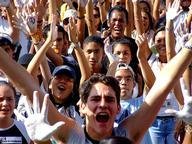Quiz Answer Key and Fun Facts
1. A lion by any other name. It's "Columbia" now, but what was the institution's name when it was founded in 1754?
2. What's up, Doc? In 1770, Columbia (under its pre-Revolutionary name) became the first institution in the 13 colonies to confer what prestigious degree?
3. Visiting fellow. Alumnus Alexander Hamilton paid a nasty call on another college during the American Revolution. What did he do?
4. In Old New York? In 1864, Columbia established the first college-level school in the United States in a field not usually associated with urban universities. What academic discipline was it?
5. UpTown Funk. Beginning in the late 1890s, Columbia moved north to a new campus on Morningside Heights in Manhattan. What was there before Columbia arrived?
6. Who's Who. The statue outside Columbia's Low Library is called "Alma Mater," but it's really the goddess Athena. Sculptor Daniel Chester French hid a small detail among the folds of her robe. What is it?
7. Belated Hail to the Chief. Future President Theodore Roosevelt withdrew from Columbia Law School's Class of 1882, but was awarded a posthumous law degree in 2008. What other U.S. President also withdrew from Columbia Law and was also awarded a posthumous degree in 2008?
8. Better late than never. Upstate New York rival Cornell started doing it 1865; Columbia waited until 1983, being the last Ivy League institution to do so. Do what?
9. Orgo Night - a Columbia tradition. What's that?
10. Columbia's Philosophy Hall is listed on the National Register of Historic Places, because of something that happened in the basement. What was it?
Source: Author
ignotus999
This quiz was reviewed by FunTrivia editor
stedman before going online.
Any errors found in FunTrivia content are routinely corrected through our feedback system.


